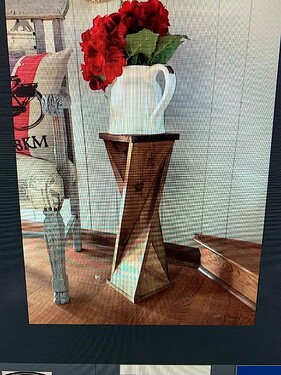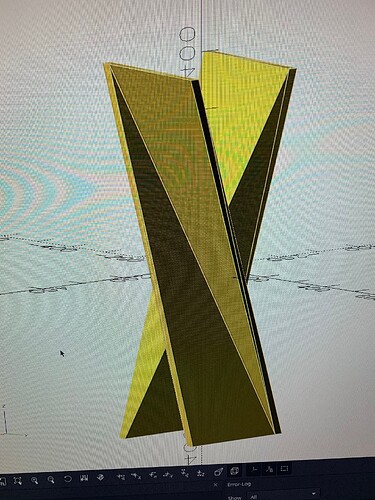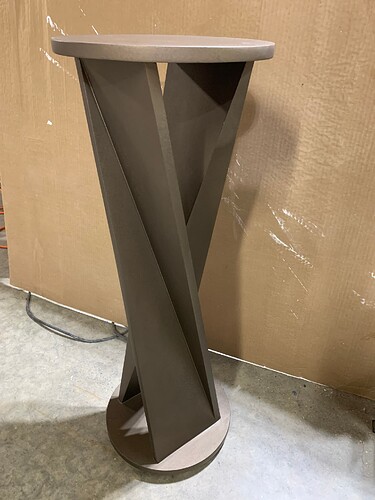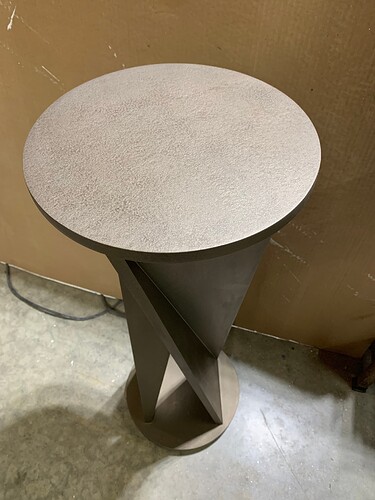A couple years ago I spotted this table and I loved how complex four triangles looked.
I had an old dining room table that used to be my sister’s. It served as a project/build table for awhile but I had disassembled it recently and thought it would be neat to give part of it back to my sister so I decided to take a shot at the table above.
I decided that I wanted a circular top 12" in diameter so I foolishly planned for a 10"x10" square for the ‘legs’. I’m not very good at visualizing things in my mind so I started modeling in OpenSCAD to see how the pieces would fit together.
As you can see if the legs are arranged in a perfect square they overlap in the middle. I wasn’t very confident that I could cut that notch so I decided to layout the legs in a rectangle just enough so they wouldn’t touch in the middle. Only after I was done with the table did I notice that maybe the same thing was done on the reference table. It doesn’t look the legs go to the edge on every corner.
Now, because my LongMill is my hammer and every project must be hammered with my LongMill, I cut the circles for the top and the triangles with my mill. The triangles were pretty big for a 30x30 LongMill so I had to work diagonally. I used a 90° v-bit to split a rectangle into two triangles with a 45° angle on the diagonal side.
Then I glued up the legs and let them dry. After the legs were dry I stood them up and placed my circle on top. It was then that I remembered that an ~10" rectangle will not fit in a 12" circle. Oops! According to Mr. Pythagoras the diagonal of a square is the side length X √2, about 14" in my case.
Well now how am I going to cut my triangles that are already glued and wont fit in my LongMill? After some thinking I decided to build a sled to cut them on my table saw. Something that is probably second nature to someone that was a woodworker before having a CNC router. I am not one of those people!
So this sled worked like a charm to resize my legs! By the way the sled is another piece of the table I started with. After using this sled I thought that maybe making a sled to cut the 45’s would have been the way to go from the start but like I said the LongMill is my hammer.
So now with the correct size legs I needed to glue the top and bottom circles. I was worried about strength and about keeping things positioned while gluing so I measured and drilled some holes for pins. I cut short pieces of 3/16" dowel and glued the top and bottom. I used two pins on the top and bottom of each leg. Eight pins in total. The result after gluing seems really sturdy.
That last photo is after staining it, being totally disgusted with the results and sanding it off. I then tried to stain it a second time, thinking that I somehow messed up the process the first time. Guess what? It looked horrible the second time too. Each board of the table took the stain differently and it was all blotchy and looked 10,000 years old.
Time to drag out the paint! I was thinking about black but when looking to see what I had for paint I found some chestnut metallic paint and decided to go with that.
I used my 3D printer to make some feet out of flexible plastic to finish off the build.
It was fun to finally make this table and I’m satisfied with the result. I also got a reminder that although the LongMill is a fantastic tool, not everything needs to be done with it.
Thanks for reading!
Michael








